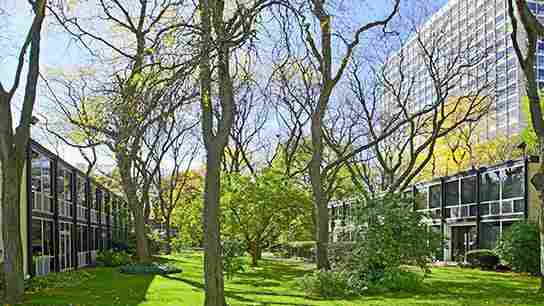On Tuesday, more than 50 years after it was originally conceived, Lafayette Park—Detroit’s lauded modernist community—was granted landmark status, an honor bestowed by the National Park Service. The overdue nomination represents the continued effort of the Michigan State Historic Preservation Office to protect and maintain the state’s inimitable modernist legacy. Spearheaded by Ann Arbor’s Quinn Evans Architects, the nomination process began in 2012 under the Michigan Modern Project.

Like many postwar planning projects, Lafayette Park rose on the former site of a working-class African-American neighborhood. Deemed a slum and subsequently razed, the site fell into the hands of Chicago developer Herbert Greenwald, who enlisted Mies van der Rohe—a veteran of the International Style who decamped from Germany’s Bauhaus school during World War II. Alongside planner Ludwig Hilberseimer and landscape architect Alfred Caldwell, the team was charged with reimagining the 78-acre site on the outskirts of Detroit.
Comprising three superblock high-rises and 186 ground-level townhouses, the self-contained community is nothing short of remarkable. Within the context of Detroit’s sprawling and decentralized decline, Lafayette Park maintains an enviable level of racial and economic equity, while boasting a rabid community of architectural enthusiasts. “It really does feel like an urban oasis in the heart of the city,” says Ruth Mills, the project manager.
According to Mills, the very existence of Lafayette Park refutes the notion that America’s midcentury master-planning projects were, by definition, a sweeping failure. She tells us, “Lafayette Park was one of the first urban renewal projects planned in the country. Urban renewal in the United States was largely a failure and actually sparked the historic preservation movement, but Lafayette Park was one of the rare success stories.”

Leave a Reply